More text-related updates: shortcuts, hidden characters, new default font and custom lists
We’re unveiling a bunch of small, but helpful updates to our Text widget. Let’s get to it!
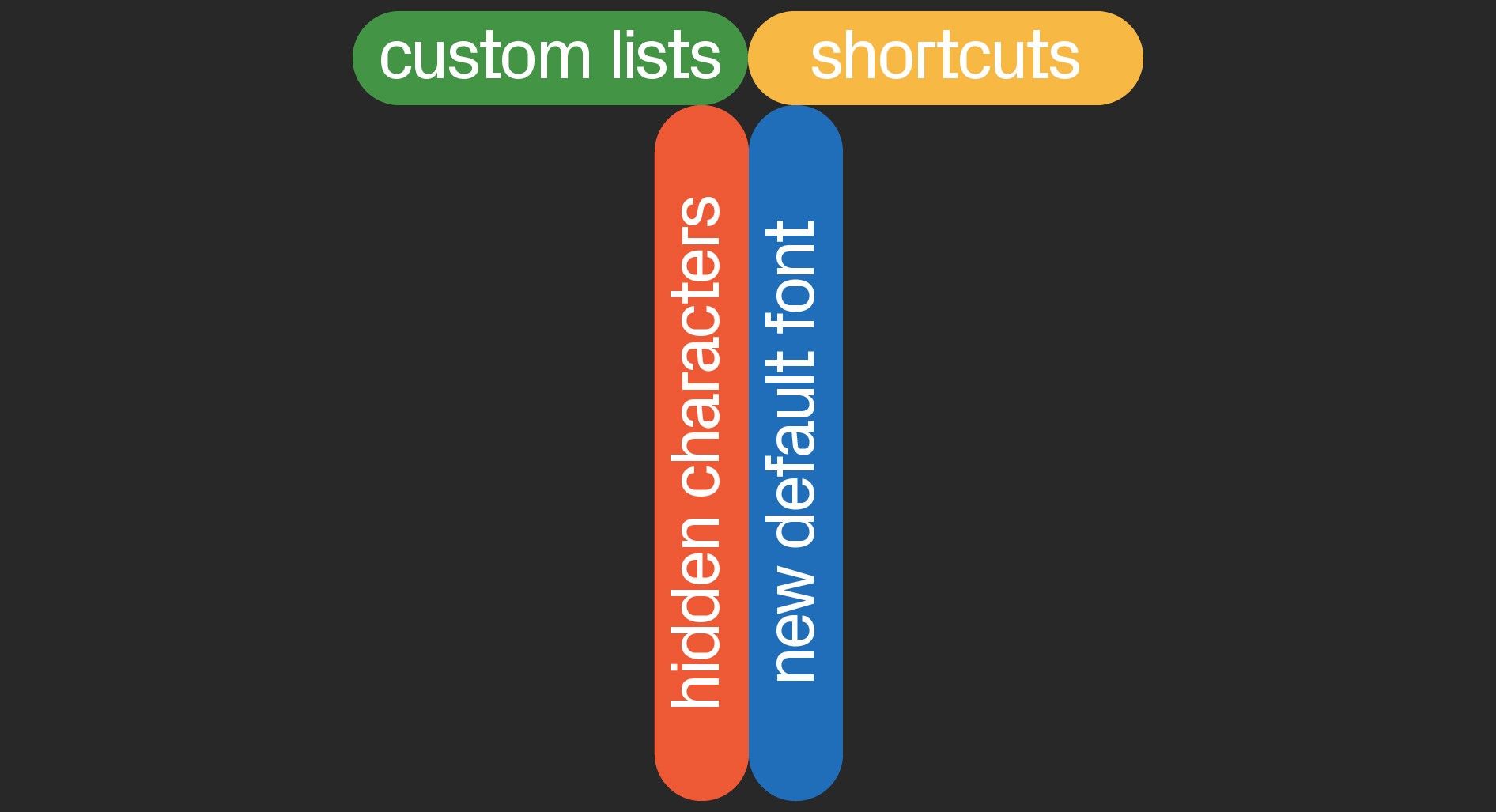
T for Text
The text widget now has a keyboard shortcut. Access it by pressing T — just like you do in most graphic design software.
Non-printable characters
A text is not just what you see, it also incorporates many things that stay invisible — such as line breaks, paragraph breaks, and spaces. Accessing these features is crucial to controlling text composition — that’s why Text widget now highlights them in light blue.
Indicates a line break (Shift + Enter, when you need to start a new line while staying within the same paragraph), v is for a non-breaking space (Alt + Space, if you add between two words they will stick together no matter what).
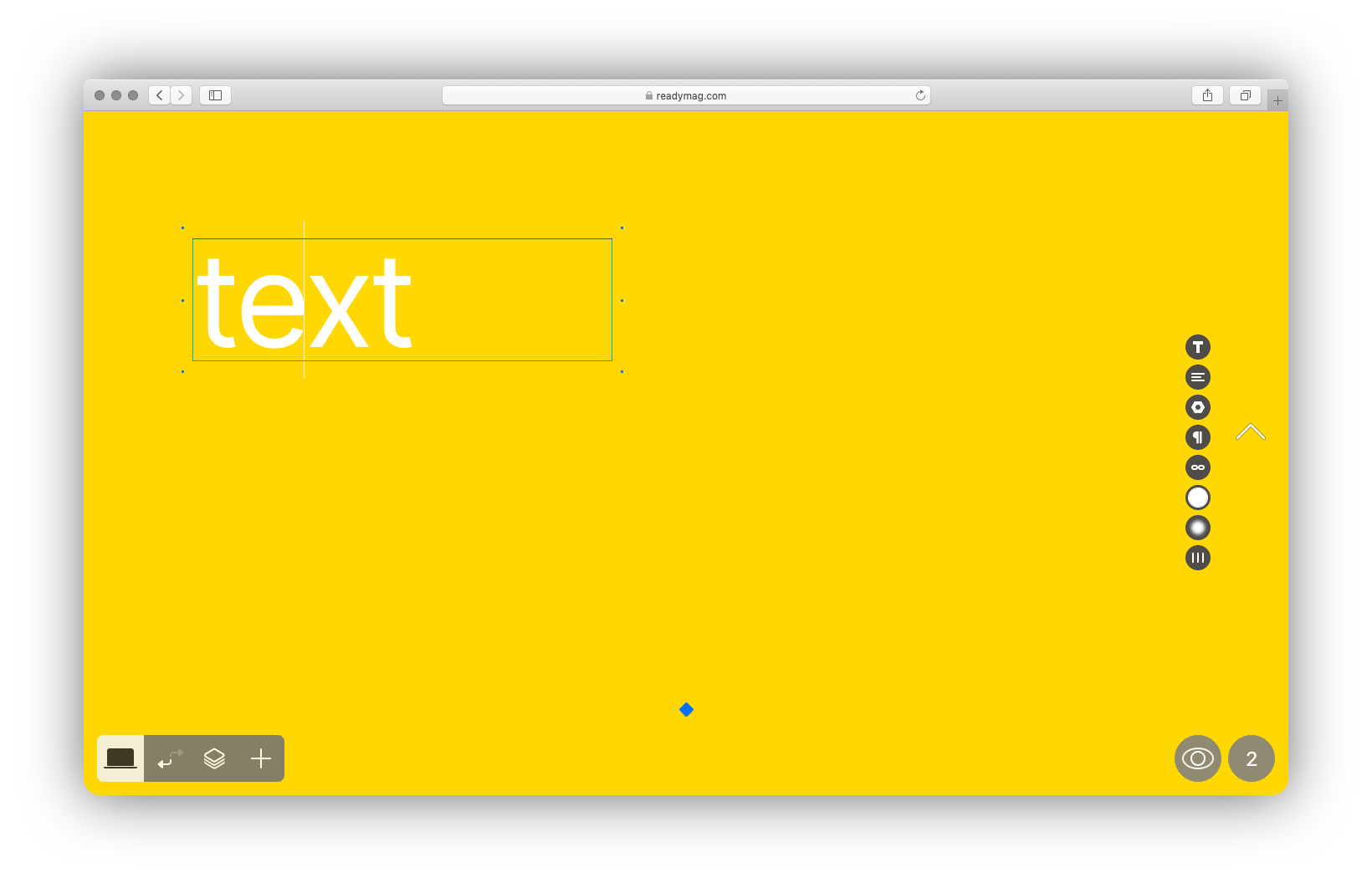
Styles: filters and easy editing
If your project (or project template) includes multiple text styles, navigating them might become a tricky task. The text widget now includes filters for Text styles: you can view the full list, see styles being used and delete those that are not. All these options will not affect your Global styles.
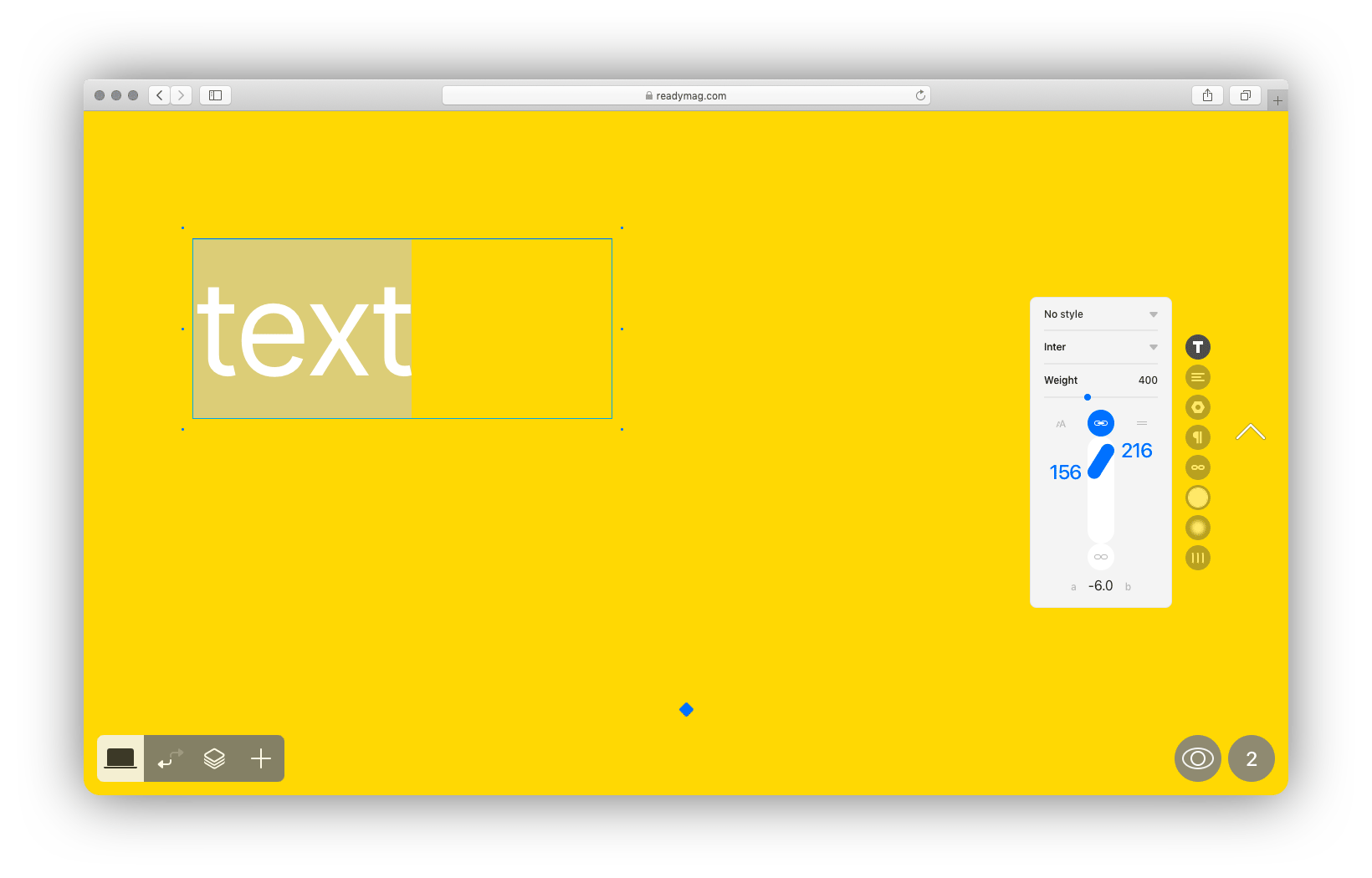
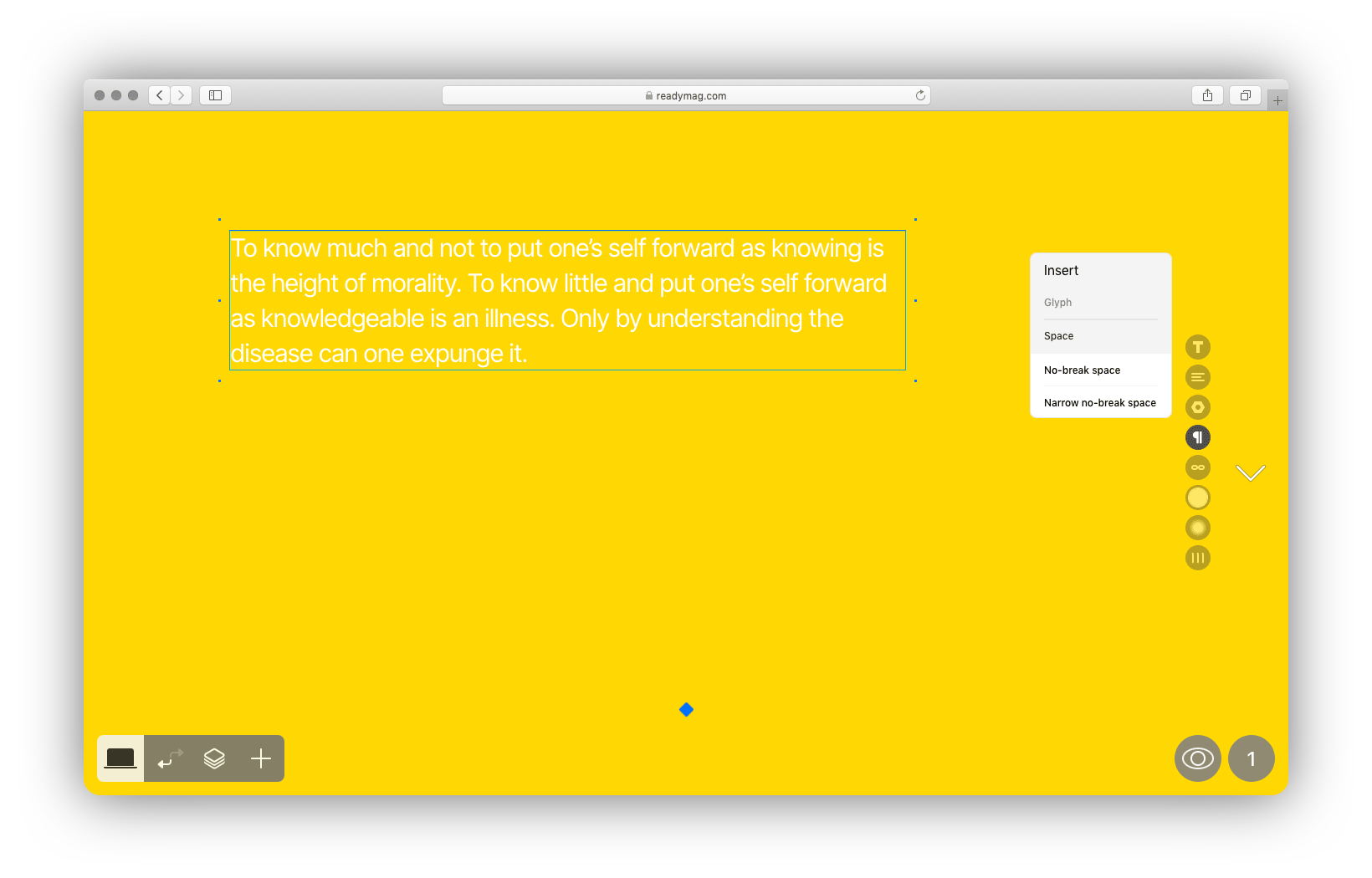
You can also now edit a style by double-clicking on its name (or clicking the nearby edit icon). It used to be much more complicated, sorry about that!
New default font
Inter now replaces Roboto as the default text widget font. Note the slider in lieu of a font style selector — Inter has variable weight, which means you can adjust it to any value you need (say Regular is 100 and Bold is 400, you can now set the weight to 102 or 356 or whatever else).
Speaking of which: you can also filter the Google Fonts catalogue under the Library tab to only show variable fonts. Remember, variability is not just about weight or width, it can be optical size, serifness/seriflessness, basically any sort of shape transformation.
Lists: Indent customisation and bullets
Items in a list are no longer indented by default: bullets and numbers appear separately from the content. If you want to indent list items (or add bullets/numbers to the indents), you can do so in the List Style tab.
In an unordered list, you can now change the default bullet to any glyph in the given font — its point size, colour and baseline shift are also customisable in the List Style tab.
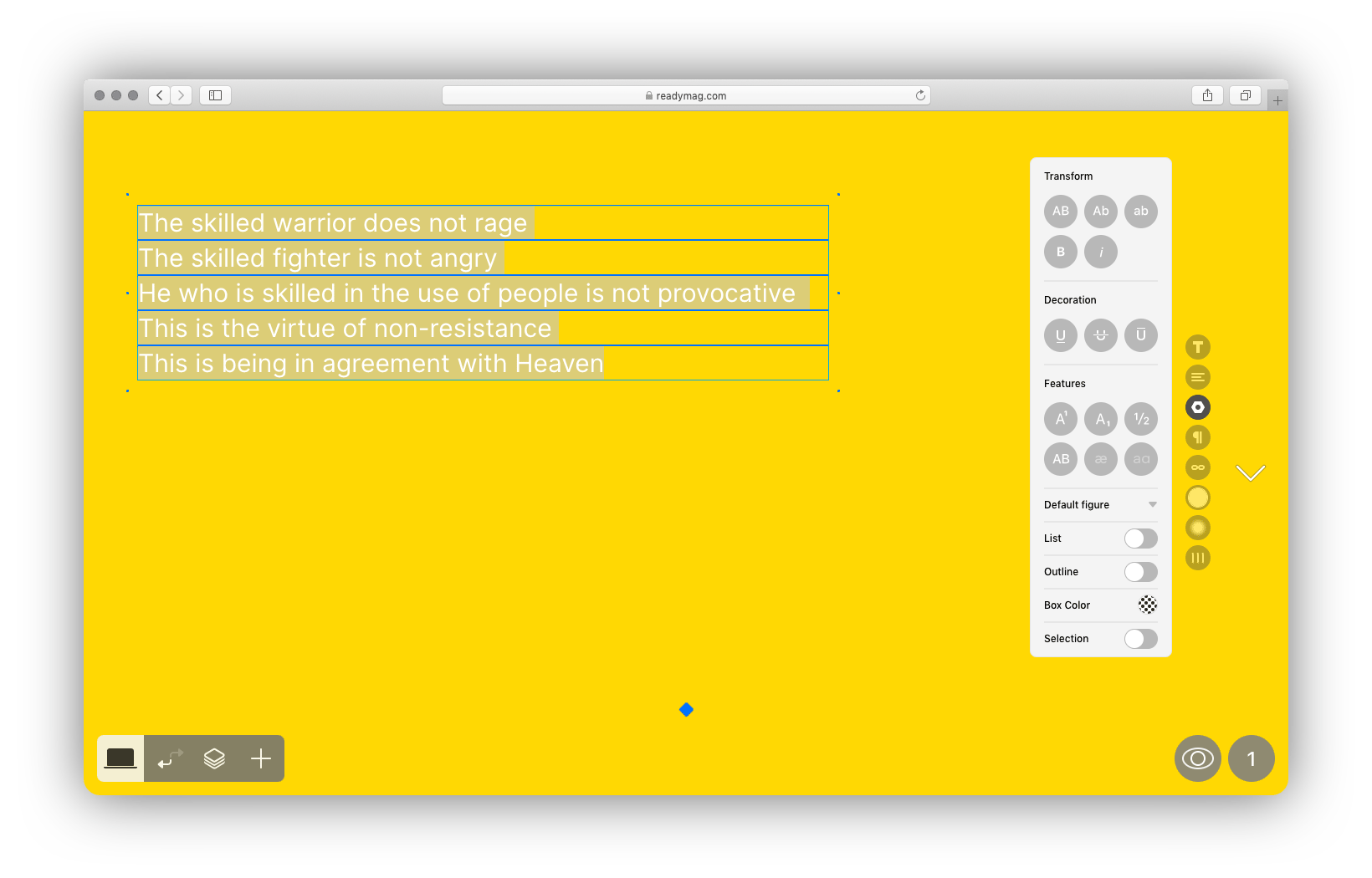
Design outstanding web in Readymag. Join now